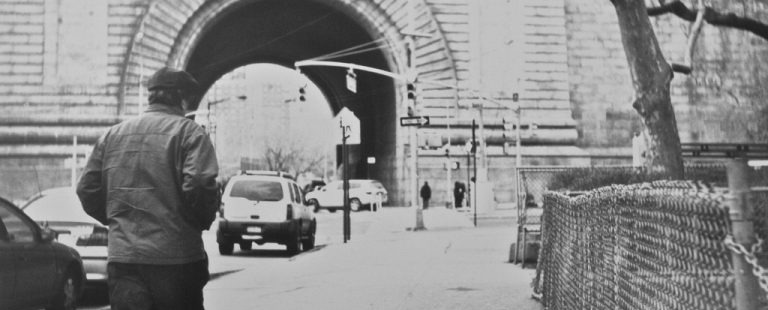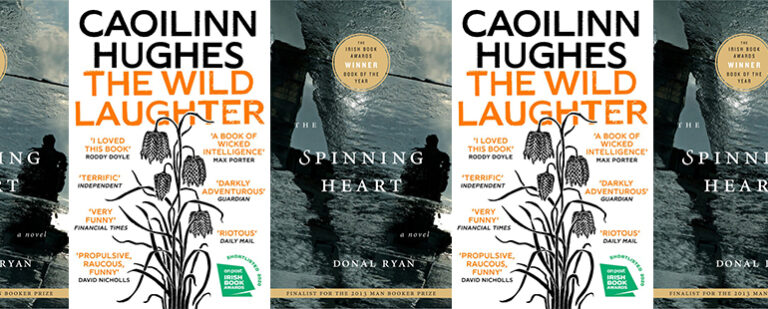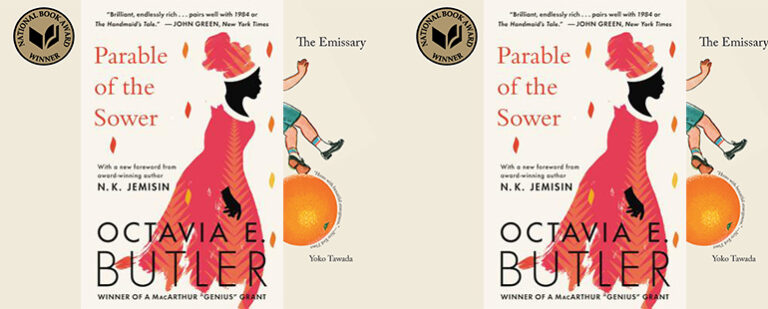The Transfer of Power in The Lying Life of Adults

Elena Ferrante’s novel, The Lying Life of Adults (2019; out in English translation by Ann Goldstein in 2020), follows Giovanna, a Neapolitan girl on the brink of adulthood, as she learns about life through her family and their stories of the past. The novel also follows a bracelet as it is passed from one female character to the next, tying them together and, by revealing secrets and truths, breaking them apart. Ferrante often uses objects in her fiction to explore relationships and time, but she also uses them as objective correlatives; while the bracelet in The Lying Life of Adults serves as a way to move the reader through the plot, it is also clearly identified as an object, one that carries symbolic meaning. The bracelet’s ownership is an important thread that runs through the book: there are those who wear the bracelet, those who hold it, and those who leave it behind.
The first mention of the bracelet occurs when 13-year-old Giovanna visits her estranged aunt Vittoria for the first time:
‘You didn’t wear the bracelet.’
I got nervous:
‘What bracelet?’
‘The one I gave you when you were born.’
As far as I could remember, I had never had a bracelet. But I sensed that for her it was an important object and my not having worn it could be an affront.
Right from the start, Giovanna understands the weight of this piece of jewelry, even though she does not possess it. Vittoria goes on to tell her a bit more about the bracelet: although she had given it to her when she was a baby, it was a “big girl’s bracelet, a bracelet she was very fond of.” Ferrante underscores that the bracelet is an object when Vittoria says, “I am not like your father, who is attached to money, attached to things; I don’t give a damn about objects, I love people.” So the bracelet, while important, seems to be more important for the meaning that it holds rather than for the thing itself. It is telling that the first real thing that Vittoria says to her niece is about the bracelet, and the first story that she tells her is how she came to give the bracelet to her when she was born.
When Giovanna asks her mother about the missing bracelet, she is attuned enough to the situation to watch her mother carefully when she responds, to consider whether her mother is telling the truth when she says she knows nothing about it. And then Giovanna lies herself, when she tells her friends that she has a bracelet from her aunt that is too special to wear. She takes the story that Vittoria had told her—that she had given the bracelet to her when she was a baby—and embellishes it, creating the bracelet that she has never seen: “I described it in great detail. It’s pure gold with rubies and emeralds, it sparkles—I said—like the jewelry you see in movies and on television.” Later, when she undresses and tries on her mother’s jewelry, she thinks, “I realized that I wished she really had given me a bracelet, and I felt that if I had it now and wore it, I would feel more powerful.” She already understands the power that lies in the object’s possession.
Remarkably, the novel is a third over before we actually see the bracelet. When we do, it is in a surprising location: it is on the wrist of Costanza, a close family friend and the mother of Giovanna’s closest friends, Angela and Ida. When it finally makes an appearance, Vittoria has arrived to take the three girls to her home; she greets Costanza and then spots it: “She paused with a serious expression on the bracelet Costanza had on her wrist, a bracelet I knew well, it was the one Angela and Ida’s mother especially liked. It was of white gold, with a flower whose petals were diamonds and rubies, splendid precisely in the sense that it gave off light; even my mother envied it.” Given Vittoria’s attention to the bracelet, and the emphasis placed on the bracelet earlier in the novel, we immediately wonder if these bracelets are one and the same. Ferrante, however, only allows us to see this world through our narrator Giovanna, and she does not suspect that this bracelet is the one that Vittoria mentioned. Only later, when Costanza arrives and gives Giovanna the bracelet, saying, “I thought it was mine, but it was yours,” does Giovanna understand that this is the bracelet in question. Giovanna cannot put it on herself, so Costanza helps her fasten the clasp. It is telling that Giovanna is unable to do so alone, and that although Giovanna’s mother is also in the room, it is Costanza who helps her to put it on her wrist. Power is transferred from the adult to the child with this gift.
The story of how Costanza came to have the bracelet is slowly told, and that story breaks apart the two families, as we learn that Giovanna’s father has been having an affair with Costanza. Giovanna wears the bracelet for a while, but then puts it away when she begins to see the bracelet as the object that holds her anxieties and all the questions she has about her parents and the past. It fuses the two women she has known to own it—Vittoria and Costanza—together in her mind: “the bracelet pressed them into one another and confused them, confusing me.” The personification of the bracelet increases its power. One day, Giovanna finds her mother in her room, holding the bracelet in her hand. (Giovanna’s mother never wears the bracelet, only holding it. She understands, perhaps, that it was never meant for her; she seems wary of its power.) She tells Giovanna that the bracelet had belonged to Vittoria’s mother and that she had left it to Vittoria when she died. Giovanna’s father had liked it, though, and he bought it from her before Giovanna was born. So another story emerges, one that contradicts the first: “But, against my will, here was the bracelet already following the path of a new story full of consequences.”
The third woman we see wearing the bracelet is Giovanna’s late grandmother, in a photograph buried deep in a dictionary. It is a photo of Giovanna’s father’s family. Giovanna’s mother shows it to Giovanna, and Giovanna is the one who looks carefully enough at the photo to see the bracelet: “‘Look,’ I said, offering her the lens, ‘grandmother is wearing my bracelet.’” Giovanna claims ownership of the bracelet at this point; she is proud that she noticed it in the photo, and she feels somewhat superior in that her mother had never noticed the bracelet on her mother-in-law’s wrist. Her mother had liked the photo and had “kept the photo in the dictionary like a flower that, even when it dries, reminds us of the moment it was given to us.” This photo is another objective correlative: a photo that Giovanna’s mother kept because it reminded her of how much she loved her husband. Now she can see that the photo contained the object that he gave to his lover; the meaning, for her, has completely shifted.
Eventually Vittoria asks for the bracelet back and, for a time, Giovanna refuses. When she finally relents, pulling it out of her pocket and handing it to Vittoria, she says:
‘I didn’t want to give it to you,’ I said, ‘it seemed to me that it was mine, but it belongs to you and no one but you should have it.’
She wasn’t expecting my gesture, she looked at the bracelet with evident annoyance, as if it were a little snake or a bad omen. She said:
‘No, I gave it to you, for me it’s enough if you love me.’
‘Take it.’
In the end, she accepted it, unwillingly, but she didn’t put it on her wrist.
Vittoria puts the bracelet in her purse. The bracelet has returned to her—at the midpoint of the novel—though it is clear that the bracelet is now not something that she wants to wear or even have in her possession. We suspect that she will not hold onto it for long.
The bracelet then drops out of the narrative for fifty-odd pages. Giovanna gets to know the children of Vittoria’s dead lover, including Guiliana, her goddaughter. Guiliana becomes a friend, and at a café, comes over to say hello, resting her hand on Giovanna’s shoulder. It is a surprise to both Giovanna and to the reader when we see the bracelet on Guiliana’s wrist. “How brightly the bracelet shone on Giuliana’s wrist, how it gained value,” Ferrante writes. The allure of the object is clear: the thing that she no longer possesses seems even more attractive now. Jealousy has reared its ugly head. Subsequently, Guiliana tells Giovanna that her father—Vittoria’s lover—had stolen the bracelet from his wife’s mother to give to Vittoria’s mother. So, once again, the story of the bracelet is changed and deepened. Another story emerges, and with it, another association. For Guiliana, “this bracelet is a permanent sign of bad times and pain.” Giovanna doesn’t yet see it that way. She says, “Objects aren’t guilty, I like it.” Part of growing up, perhaps, is understanding the meaning and the stories that objects hold. It is clear that both Vittoria and Giovanna’s mother, the two characters who do not wear the bracelet, understand its power and symbolism.
When Guiliana leaves the bracelet behind on a trip to Milan, Giovanna takes it upon herself to return to Milan to pick it up. When she goes to give it back to Guiliana, Vittoria is there and tells her to keep it: “Giuliana, if you want to know the truth, doesn’t need it. She’s so full of light that the bracelet or any other piece of jewelry for her is too much.” In the novel’s final pages, Giovanna wears the bracelet when she has sex for the first time; she then removes it and intentionally leaves it on the floor of the room before she exits and the novel ends. Giovanna has learned the power of an object, and her opinion of the bracelet has changed from seeing it as a beautiful piece of jewelry to an object imbued with meaning and story. It is notable that early in the novel, when she first sees the bracelet on Costanza, she comments on its ability to give off light. Towards the end, when Vittoria says that Guiliana is so full of light that she doesn’t need the bracelet, we see the shift in the light’s source. Like Vittoria and her mother, Giovanna now understands that one’s worth and power must come from within. She does not want to depend on anyone else; she understands the importance of independence. When Giovanna thus leaves the bracelet behind, it is a symbol of her coming-of-age, of her beginning her journey as an adult.


